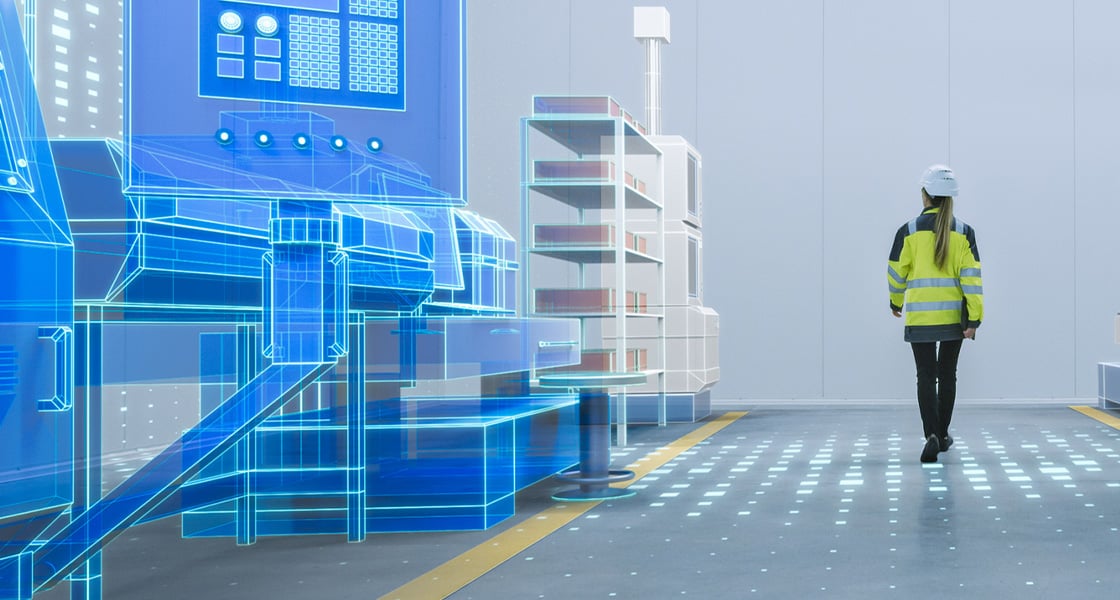September 15, 2022

Related Blogs:
Sign up for blog updates
Get innovation delivered to your inbox. Sign up for our blog and stay on top of the very latest from Semtech (formerly Sierra Wireless).
September 15, 2022

In the old days, industrial infrastructure was divided between Operational Technology (OT) (dealing with machinery) and Information Technology (IT) (dealing with data). Edge computing has blurred the lines between OT and IT, and now modern industrial operations are seeing a convergence of the two in the Industrial Internet of Things (IIoT).
For example, sensor data from machines is now being analyzed in real time on the factory floor, machines can now process data on their own, and applications that reside in the cloud regularly make use of machine-generated information. Edge data is variously used to monitor performance, predict failure rates, identify operational risks or patterns, train machine-learning systems, and perform other valuable functions in the industrial plant.
Modern industrial data processing is distributed across cloud, local edge networks, and IIoT endpoints. Even small, constrained endpoints, deeply embedded in the assets they are tracking, can collect, analyze, and share information, either locally or with the cloud.
Making IIoT systems work requires complete and successful edge/cloud integration, involves a number of complex issues, and often requires expertise that falls outside the core competence of many organizations. Sierra Wireless is here to help. Here’s a brief primer on IIoT data integration.
There are five key factors that impact IIoT implementation decisions: security, scalability, cost, latency, and reliability.
Security – Attackers continually search for back doors onto the network, and IIoT devices are a favorite target. Successful IIoT environments must be completely secure, using a multi-layered, multi-pronged security infrastructure that protects the entire chain, from device to edge to cloud. That means safeguarding everything – device operation, cloud connectivity, all device/cloud interactions relating to device maintenance, and the entire cloud-based system.
Scalability – Many IIoT deployments start out small, but they can grow to thousands or millions of devices over time. Organizations must plan for efficient growth. In virtually every case, this involves processing data at both the edge and in the cloud, and it’s important to have an effective data-filtering system in place to prevent data from overwhelming edge devices or causing latency or bandwidth issues in transfers to the cloud.
Cost – Today’s technology makes it possible for tiny sensors and other battery- powered IoT devices to take on a certain amount of processing and storage, but multiplying that capability across thousands or millions of devices can become unsustainable. Using other components in the “deep edge,” such as smart modems, gateways, and local edge networks, can maximize the effectiveness of edge processing while minimizing the cost of small, constrained sensor devices.
Latency – Many IIoT applications require data analytics and processing response times in the milliseconds. Edge computing makes it possible to deliver ultra-low latency, but fine-tuning algorithms and managing the day-to-day operation of these low-latency applications can be difficult without cloud oversight.
Reliability – It’s important to minimize the impact of performance and latency issues that impact communications with the cloud over a public network. Organizations must balance edge and cloud processing, optimizing how and when devices access the cloud.
Build or Buy? We Have You Covered
We make IIoT planning, deployment and operations easy whether you choose to build a solution or buy one. Our IIoT experts are ready to guide you through the process of optimizing edge/ cloud integration, selecting from our extensive range of tailored solutions that help maximize the return on any IIoT investment.
For example, for implementing a security infrastructure, you can choose to integrate our edge devices, Legato® development environment, and AirVantage protocol stacks to suit your precise needs. Alternatively, you can simply buy Octave, our all-in-one security solution that enables a globally managed security service with an out-of-the-box infrastructure designed for reliable end-to-end security.
When addressing scalability concerns, you can build your own solution leveraging our global connectivity services, Ready-to-Connect Modules, and AirVantage platform. Otherwise, you can buy our Octave solution, which filters data in a “local data center” to process edge data before sending it to the cloud. Octave’s data processing actions and/or store-and-forward settings can be modified at any time so you can continually address scalability issues as your IIoT deployment grows.
Our solutions have evolved over time based on our global experience with IIoT technology and deployments. The solutions include:
For more than 25 years, Sierra Wireless has been helping industrial organizations deploy IIoT solutions, and, as IIoT capabilities have migrated to the edge, helping those organizations optimize edge/cloud integration to make the most of modern data. For more information about how we can bring your secure IIoT infrastructure to life, access our white paper or contact us directly.
Resources from Sierra Wireless on this topic include:
Get innovation delivered to your inbox. Sign up for our blog and stay on top of the very latest from Semtech (formerly Sierra Wireless).